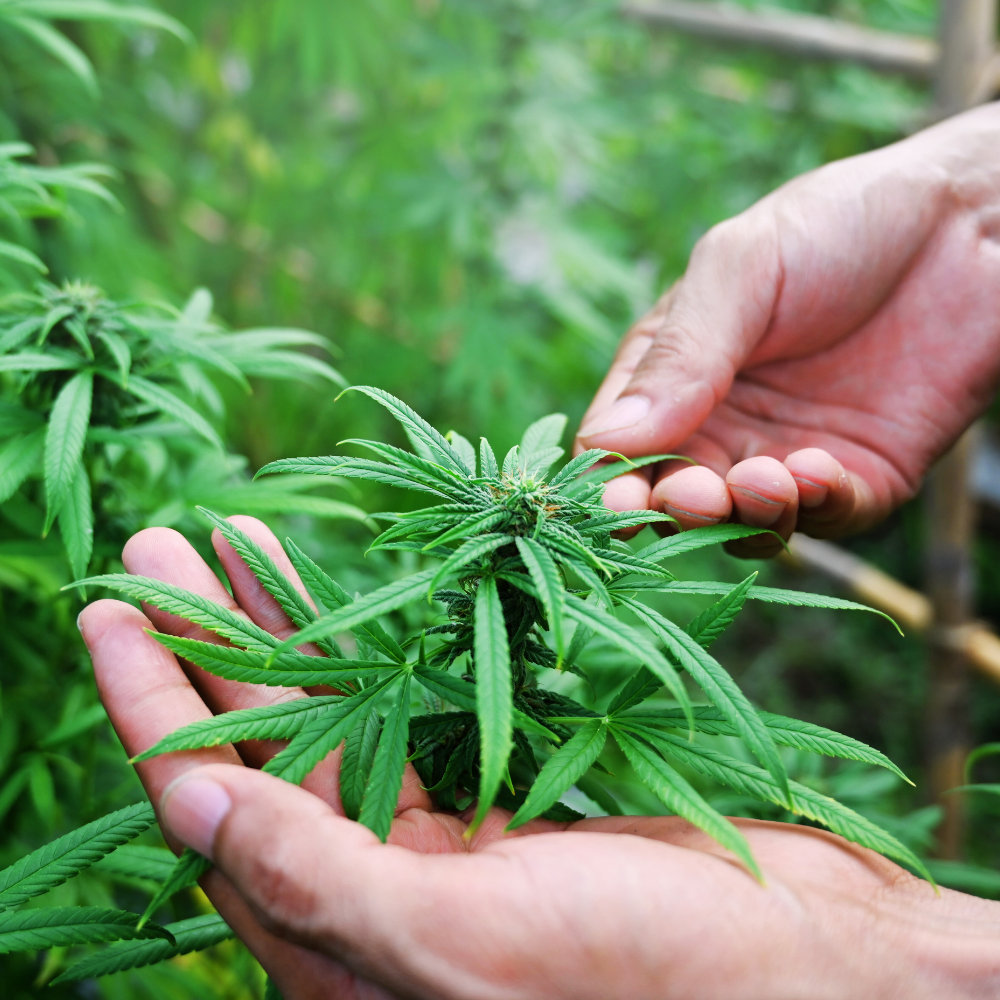How Are Cannabis & Hemp Grown for Dispensaries?
Commercial cultivation of cannabis and hemp for legal dispensaries has become an increasingly sophisticated and regulated industry. These plants are grown for their medicinal and therapeutic properties, offering a range of potential benefits for consumers. Let’s explore how these crops are cultivated and why they’ve become valuable in the medical and wellness sectors.
Commercial Cultivation Practices
Cannabis and hemp are typically grown in one of three environments:
- Outdoor Fields: Similar to traditional agriculture, plants are grown in large open fields. This method is often used for hemp and some cannabis strains.
- Greenhouses: Provide a controlled environment while utilizing natural sunlight. This method offers a balance between cost-efficiency and quality control.
- Indoor Facilities: Offer the highest level of environmental control, allowing for year-round production and consistent quality.
Regardless of the growing environment, commercial cultivators focus on several key factors:
- Genetics: Selecting and sometimes breeding plants for specific traits like cannabinoid content, terpene profiles, and growth characteristics.
- Lighting: Ensuring plants receive optimal light for photosynthesis, often using high-efficiency LED systems in indoor settings.
- Nutrients: Providing balanced nutrition through carefully formulated feeding programs.
- Climate Control: Maintaining ideal temperature, humidity, and air circulation.
- Pest and Disease Management: Implementing integrated pest management strategies to protect crops.
- Harvesting and Processing: Timing harvest for peak potency and using proper drying and curing techniques.
Medicinal Value of Cannabis and Hemp
Cannabis and hemp plants contain over 100 different cannabinoids, with THC (tetrahydrocannabinol) and CBD (cannabidiol) being the most well-known. These compounds interact with the human endocannabinoid system, potentially offering various therapeutic effects:
- Pain Management: Both THC and CBD have shown potential in alleviating chronic pain conditions.
- Anxiety and Depression: Some users report improved mood and reduced anxiety symptoms.
- Sleep Support: Certain strains may help improve sleep quality and duration.
- Nausea Relief: Particularly beneficial for cancer patients undergoing chemotherapy.
- Anti-inflammatory Effects: CBD, in particular, has shown promise in reducing inflammation.
- Neurological Disorders: Some cannabinoids may help manage symptoms of conditions like epilepsy and multiple sclerosis.
Different Strains and Their Strengths
Cannabis strains are often categorized into three main types:
- Indica: Generally associated with relaxing, sedating effects. Often used for pain relief, sleep support, and anxiety reduction.
- Sativa: Typically linked to more energizing, uplifting effects. Often used for mood enhancement, creativity, and focus.
- Hybrid: A combination of indica and sativa, offering balanced effects.
However, it’s important to note that these categorizations are somewhat oversimplified. The effects of a particular strain depend on its specific cannabinoid and terpene profile rather than just its classification.
Some popular medicinal strains include:
- Charlotte’s Web: High in CBD, low in THC. Often used for seizure disorders and anxiety.
- ACDC: Another high-CBD strain, popular for pain management without psychoactive effects.
- Harlequin: Balanced CBD:THC ratio, often used for pain relief and anxiety reduction.
- Blue Dream: A popular hybrid, used for pain relief and mood enhancement.
Hemp strains, while all low in THC, can vary in their CBD content and other cannabinoid profiles. Some popular hemp strains for CBD production include:
- Sour Space Candy: Known for its uplifting effects and citrusy flavor.
- Lifter: Often used for daytime use due to its energizing properties.
- Special Sauce: Popular for its relaxing effects and berry-like aroma.
Safety and Benefits for Personal Use
When obtained from legal, licensed dispensaries, cannabis and hemp products undergo rigorous testing for potency, purity, and contaminants. This ensures that consumers receive safe, accurately labeled products. Users can feel confident about:
- Quality Control: Products are tested for pesticides, heavy metals, and microbial contaminants.
- Accurate Labeling: Cannabinoid content is verified, allowing users to choose appropriate products and dosages.
- Legal Compliance: Products from licensed dispensaries comply with state regulations.
- Variety: Dispensaries offer a range of products to suit different needs and preferences.
- Professional Guidance: Dispensary staff are often trained to provide information about products and their potential effects.
Benefits of using these products may include:
- Natural Alternative: Many users prefer plant-based options over synthetic pharmaceuticals.
- Personalized Medicine: The variety of strains and products allows users to find what works best for their individual needs.
- Potential Reduced Side Effects: Some users report fewer side effects compared to traditional medications.
- Holistic Wellness: Beyond symptom management, many users report improved overall wellbeing.
Conclusion
Commercial cultivation of cannabis and hemp for legal dispensaries has evolved into a sophisticated industry, producing high-quality products for medicinal and wellness purposes. These plants offer a range of potential benefits, from pain management to mood enhancement, sleep support, and more.
The variety of strains available allows users to find products that best suit their individual needs, whether they’re seeking the potential therapeutic effects of CBD or the combined action of multiple cannabinoids.
When obtained from legal dispensaries, users can feel confident in the safety and quality of these products. However, it’s always important to use cannabis and hemp products responsibly. Start with low doses, be aware of potential interactions with other medications, and consult with a healthcare provider, especially if you have underlying health conditions.
As research in this field continues to expand, we may discover even more potential benefits of these versatile plants. By staying informed and using these products responsibly, individuals can explore natural options for supporting their health and wellbeing.







